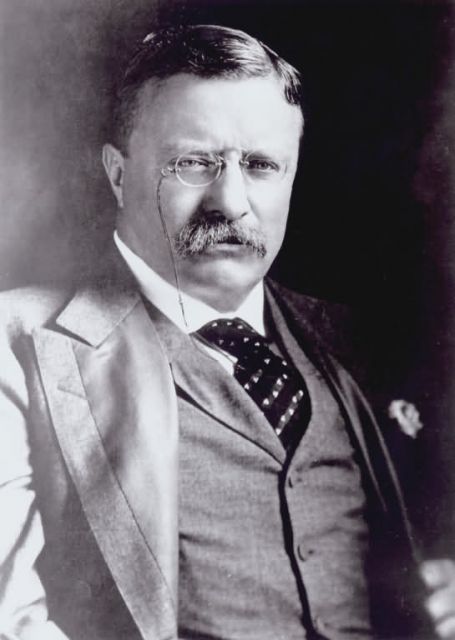Theodore Roosevelt (1858-1919) continues to cast a long and profound shadow in American conservation circles, and nowhere more significant than among the men and women of the National Wildlife Refuge System, where he has become something of a ââ¬Åpatron saintââ¬Â because of his fundamental role in creating and shaping Americaââ¬â¢s vast network of public lands managed for the conservation and stewardship of animals, plants, and habitat, starting with his March 14, 1903, executive order declaring Floridaââ¬â¢s tiny pelican island as the Nationââ¬â¢s first National Wildlife Refuge. Never patient with bureaucracy, Roosevelt created the 4 acre Pelican Island sanctuary with characteristic flourish, asking an aide, ââ¬ÅIs there any law that will prevent me from declaring Pelican Island a Federal Bird Reservation?ââ¬Â Told there was not, he replied, ââ¬ÅVery well, then I so declare it.ââ¬Â Roosevelt signed 51 Executive Orders creating sanctuaries during his presidency, establishing new refuges in 17 states and territories, and making greater use of the Executive Order tool than any president up to that time. In a single day ââ¬â February 25, 1909 ââ¬â Roosevelt created 17 different wildlife reservations throughout the Rockies and the far West. Two days before leaving office, Roosevelt was still setting aside wildlife refuges. Today there are 538 National Wildlife Refuges in all 50 states and territories, encompassing 94 million acres of public land. Oddly, Roosevelt never made it to Pelican Island, where it all began; six years after leaving the presidency, in 1915, however, Roosevelt did sojourn among the bird islands of coastal Louisiana, most of which are now included within Breton National Wildlife Refuge, the Nationââ¬â¢s second oldest unit. ââ¬ÅOn the morning of the 12th, we returned to Pass Christian (Mississippi). I was very glad to have seen this bird refuge,ââ¬Â Roosevelt wrote in one of his autobiographies, A Book Loverââ¬â¢s Holidays in the Open. ââ¬ÅWith care and protection the birds will increase and grow tamer and tamer, until it will be possible for any one to make trips among these reserves and refuges, and to see as much as we saw, at even closer quarters. No sight more beautiful and more interesting could be imagined. And to lose the chance to see frigate-birds soaring in circles above the storm, or a file of pelicans winging their way homeward across the crimson afterglow of the sunset, or a myriad terns flashing in the bright light of midday as they hover in a shifting maze above the beach ââ¬â why, the loss is like the loss of a gallery of the masterpieces of the artists of old time.ââ¬Â
Hide.










